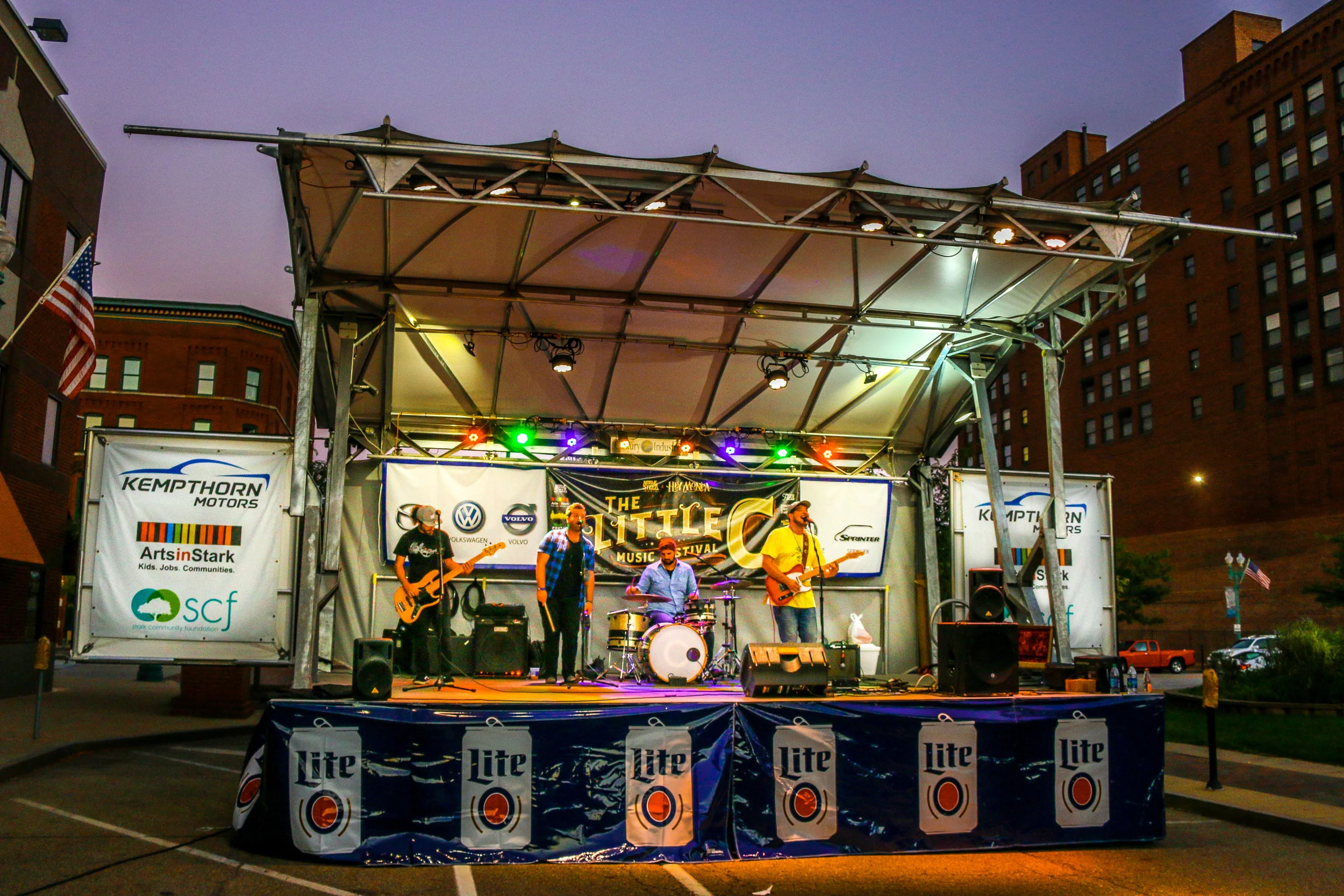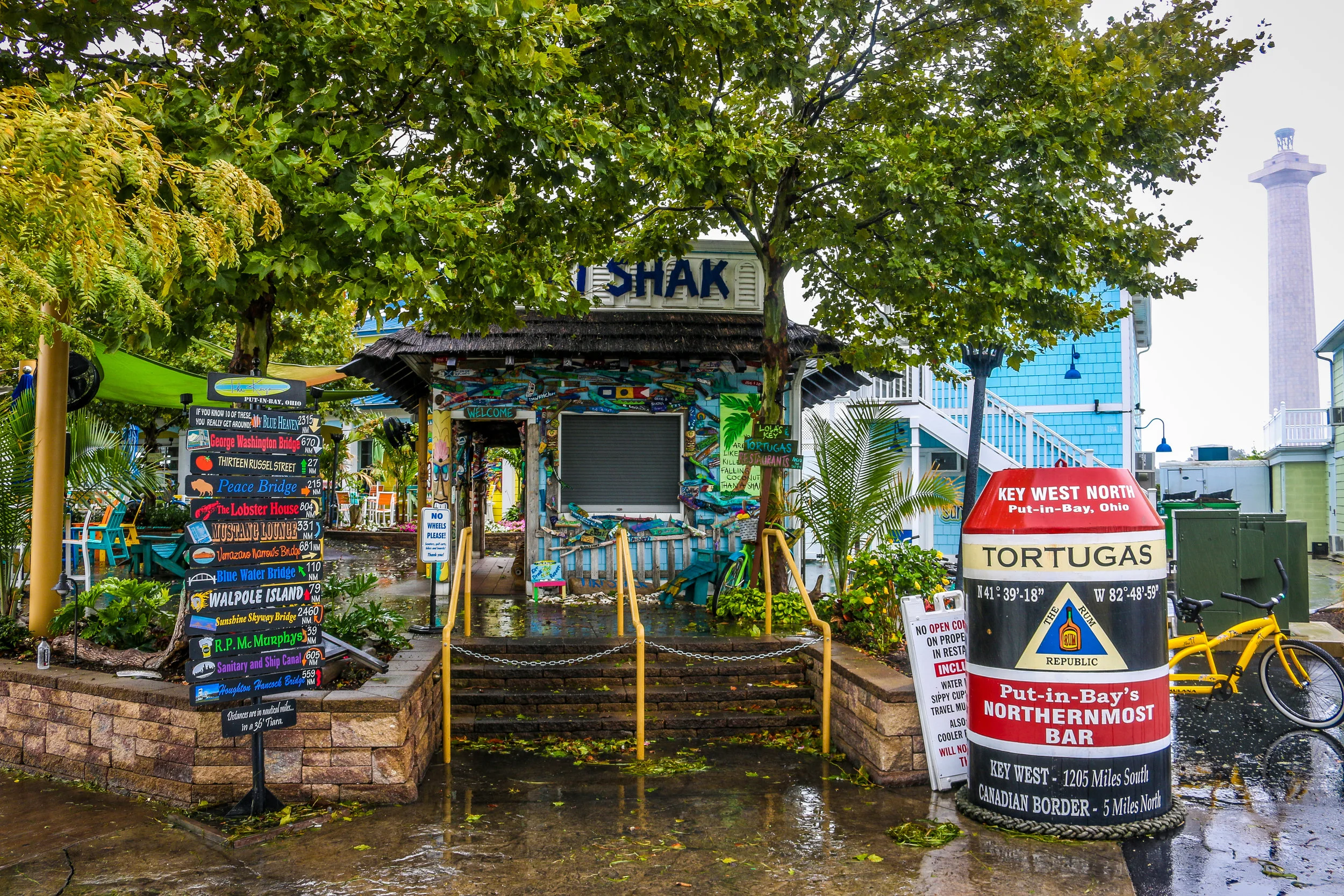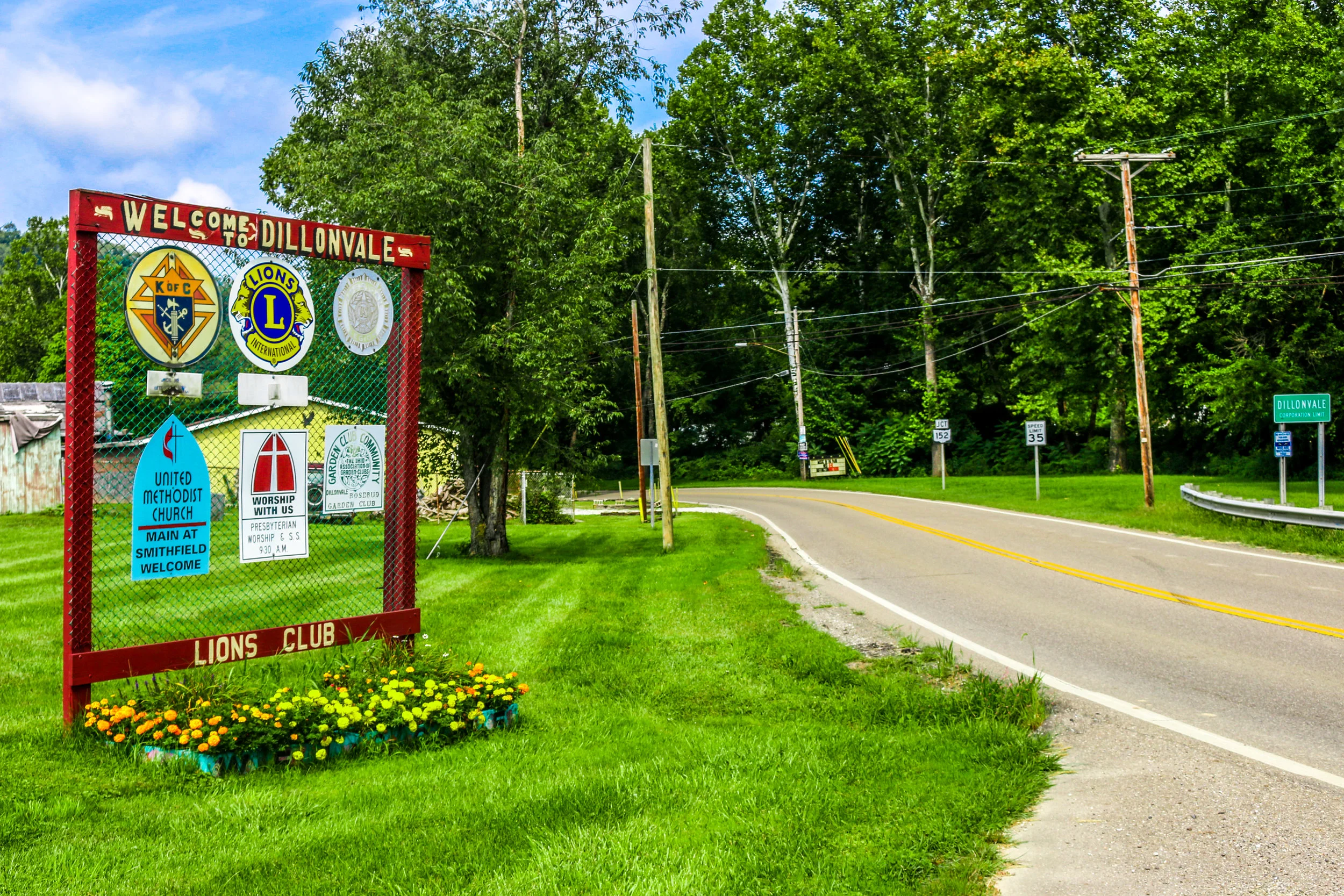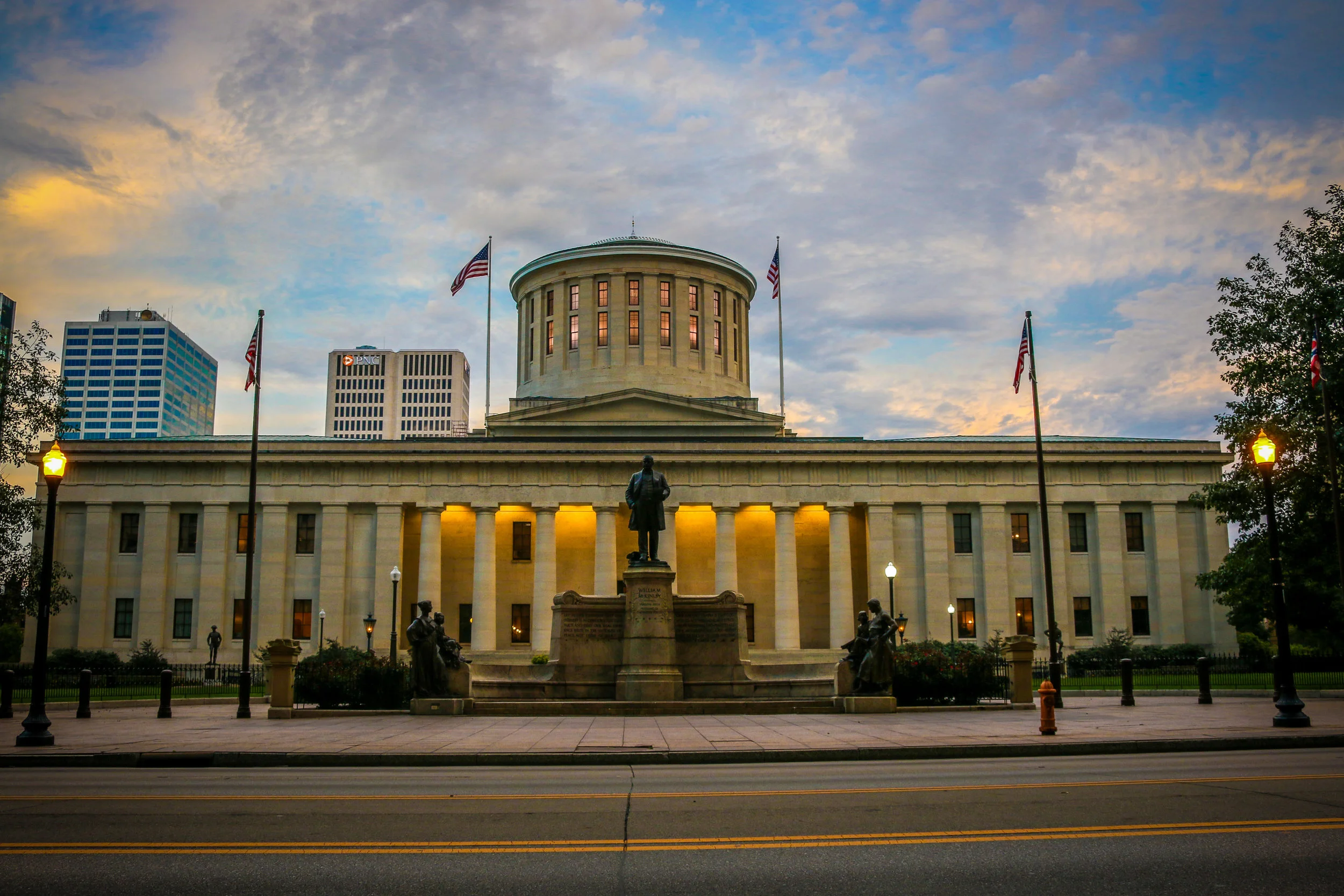This past weekend I had the pleasure of attending the Little C Music Festival in Canton, Ohio. While I have been to quite a few music festivals this year, this one was different because I got a peak behind the curtain. My old college friend Jason, who runs JLS Artist Management, was running the festival along with one of the bands he represents Hey Monea who are from Canton. It was really cool to see this festival from the inside and get to meet everyone involved, and I had a great time at the festival and hanging around in Canton.
The name “Little C” comes from the idea that Canton is often overlooked among the “Big Cs” of Ohio: Cleveland, Cincinnati and Columbus. In recent years Canton has tried to reinvigorate itself from the inside and create more of a tourist draw with events like Little C Music Festival. While the Pro Football Hall of Fame is excellent and will always be a big draw, it’s great to see a town moving away from being a one trick pony…
It’s been a fairly quiet week out here on the road this week. After leading an exciting tour for my old tour company, I needed a little bit of time to relax and get back into the swing of things as I prepare for a busy fall season. It’s cooling down and I’m looking forward to fall colors and apple cider. While I spent a few days out in and around Sandusky, my week started and ended in the greater Cleveland area. Cleveland is definitely a city of neighborhoods, and while it hasn’t struck me as hard as Cincinnati did, it has grown on me. It seems there are little hidden secrets around every corner and I’ve only scratched the surface of what the city has to offer.
I started my week with an evening in Chagrin Falls. Chagrin Falls is a charming village on the far outskirts of the Cleveland suburbs. It gets its name from the small but pleasant waterfall which flows right through the center of town. Surrounded by quaint shops and restaurants, I just enjoyed wandering around town and taking some photos…
South Bass Island is a tiny little 3.7 mile by 1.5 mile island which sits 3 miles off the coast of mainland Ohio and is surrounded by Lake Erie. I love islands and have lived on several in my life, and am particularly fond of those not connected by road. They are neat little pockets of culture and I always enjoy visiting them. Accessible by boat or air, South Bass Island is often called Put-In Bay, and has been referred to as the “Key West of Lake Erie”. While that may be a bit of a stretch, it is a really neat place with some great bars and restaurants and some interesting history. I enjoyed visiting the fascinating Perry’s Victory and International Peace Memorial, which commemorates the naval battle for Lake Erie during the War of 1812. While I was there in the off-season and on a chilly and rainy Monday, I still had a really great time on the island and wanted to share these photos from my trip. While not as off-the-beaten-path as the trip you may remember I took to Daufuskie Island in South Carolina (read that story HERE), Put-In Bay is a really cool place and definitely one you should visit if you are in the area.
Geneva-on-the-Lake is a wonderful little resort town on the shores of Lake Erie in north-central Ohio. Local legend tells of early 20th century camping trips to the area by John D. Rockefeller, Harvey Firestone and Henry Ford, but tourism had come to the area almost a century earlier. As industry started to spread along Lake Erie after Ohio became a state in 1803, a small fishing resort called Sturgeon Point House opened, catering to the local workers and to travelers passing through. Soon after the Civil War ended, a descendant of the founder of Sturgeon Point House opened a small picnic area overlooking the lake with a horse-drawn carousel as its main attraction. Soon, people were camping there too, and primitive cottages began to spring up. Originally catering mostly to the upper class, Geneva-on-the-Lake would transform into an affordable getaway for everyone in the first half of the 20th century with the spread of the automobile. Although the area declined in the seventies and eighties, it bounced back in the nineties and seemed to be doing really well when I visited recently. I loved the historic trail through town which told scandalous stories from yesteryear
My maternal grandfather died when I was just 3 years old. I have only the faintest memory of him, and it's likely those memories come more from old photos and home movies than anything else. I know the waves in my hair are his. I know he was a bombardier in the Pacific theater and served in Korea. I remember being a teenager and slipping on his old leather bomber jacket and loving the way it felt and the smell of the leather. I know that he worked at Sears after he retired from the Air Force and I kind of believe I remember visiting him there as a kid (this website was built at the library across the street from that old Sears building). Visiting my grandmother's house growing up, I spent a lot of time in his workshop building model cars and airplanes. I liked his tool collection and how everything seemed to have its place, and I always felt connected to him there. Outside of these few small things though, I really only knew one thing about him and about that side of my family which was the name of his hometown: Dillonvale, Ohio.
Washington Court House is a quiet town in Fayette County in central Ohio. From what I've read and heard, it's always been a quiet town - always, that is, except for one night in October of 1894. That night, a mob formed outside the courthouse in an attempt to lynch a prisoner being held there. Shots were fired and five men were killed. This incident has come to be known as the Washington Court House Riot of 1894.
It's been another busy but wonderful week out here in Western Ohio. I started the week in Dayton, returned briefly to Cincinnati and then made my way out to Columbus, Ohio's capital city. I've met some great people, taken some sweet photos, learned some interesting history and attended some great events. The weather has turned pretty hot and some amazing Midwestern thunderstorms have passed overhead, but I'm keeping cool and dry and really enjoying my time in the Buckeye State. As I've been driving, I've been enjoying a great podcast called Ohio V. The World. It is an interesting , in depth look at some of the history of the state and it's really given me some great background as I travel. This week has brought me into some of the flat, farm filled landscapes Ohio is most known for, but even these are dotted with cool old farm buildings and Rockwell-esque small towns. It's been another great week exploring all the great things America and Ohio have to offer…
In March of 1913, massive rainstorms over Easter weekend caused the Miami River to swell and break through the levees built to contain it. Water rushed through downtown Dayton reaching depths of 20 feet. The flood would do $100 million in damage, destroy 20,000 homes and take 360 lives. Miamisburg was devastated with much of the city underwater.
Relief efforts arrived with the Red Cross setting up tent cities to provide shelter to the displaced population. Miamisburg resident Sherman "Cocky" Porter volunteered to try and help feed the people and the relief workers. Trying to feed hundreds of people a hot meal is no easy task, so Porter decided to cook up a huge batch of hamburgers and pass them out to the crowds. They were a hit…
I love baseball. I couldn't quote batting averages off the top of my head nor could I tell you who's won every World Series, I simply love the game. I love the sight of a ball field with its crisp white lines, the call of "cold beer, peanuts, crackerjacks" from the vendors climbing the bleachers and the sound of a well hit ball as it leaves the bat headed for the outfield. I love the history and tradition of the game and how it has often marched alongside, and evolved with, the history of the country. You can probably imagine my excitement then, when, while visiting the city where professional baseball began, I was able to also view the largest private collection of baseball memorabilia in the world.
The Green Diamond Gallery, in suburban Cincinnati, is a magical place filled to bursting with some of the most awesome mementos to the history of the baseball. While it's not a massive place, I spent three hours there trying to take it all in…
As I've traveled the country, I've visited a lot of small towns. Some are thriving, some are faltering, and some are just plain crumbling. When the Plaza Theater sat empty for almost 15 years in downtown Miamisburg, Ohio, it was symbolic of the latter two. When it opened in 1919, the 700 seat Plaza was the heart of a thriving downtown. People came downtown to do their shopping, catch up on the gossip and see a show. The theater closed its doors in 1968, but the building lived on as the new home of Sor-rel's Western Wear, a successful apparel and equipment store. After a solid 26 year run where the business thrived, the Sorrel family sold their store off in 1994. Eight years later, it was closed and the theater-turned-western-store would sit empty right in the middle of a struggling Main Street. Downtown Miamisburg, like so many small towns, had ceded its business to strip malls and chain stores outside the city limits…
Sadly leaving Athens County behind, I stopped for a brief visit at the Buckeye Furnace State Memorial. Tucked back in the woods, this was a great place to learn more about the production of pig iron, an industry that brought a lot of wealth to the region. I had the place all to myself but could imagine the small community which once stood there and kept the furnace going. This was another of Appalachia's hard labor industries, and one that disappeared as the iron ore dried up and the nation's demands shifted to steal. It was a cool place to visit.
From there I headed out to the Bob Evans Farm in Rio Grande where I had a big breakfast for lunch and wandered around the property for a while. I learned the story of Bob and how he started with a steakhouse, but soon started making sausage as well. This sausage would catapult his business into one of Ohio's best known names.
Inspired by murals he had seen across the state in Steubenville, Dr. Louis Chaboudy hoped to create something similar in his hometown of Portsmouth. In 1992, he commissioned Robert Dafford to begin work on a project which would last 10 years. Over that time period, Dafford painted over 50 murals which stretch 2200 feet along the Ohio River. These murals tell the history of Sciotto County and of the people who have lived there. It is a wonderful project which I really enjoyed visiting. The local Visitor's Center provides brochures and even a cell phone tour for your visit. Unfortunately I was shooting into the sun while I was there, and all of the murals are different sizes making it difficult to crop them and still have a nice layout for this post, but I still thought that they were wonderful and wanted to share them with you today. Enjoy!













